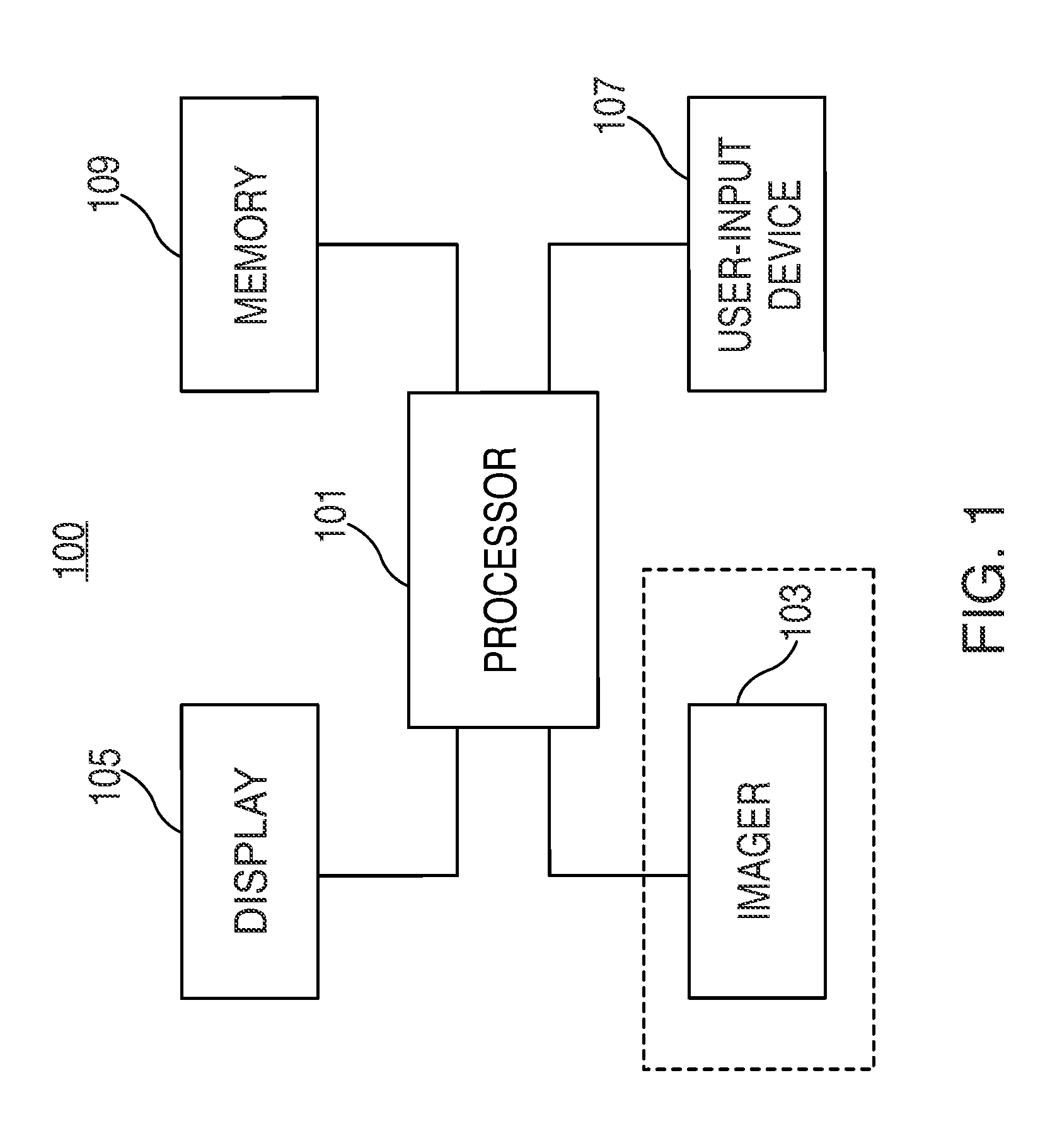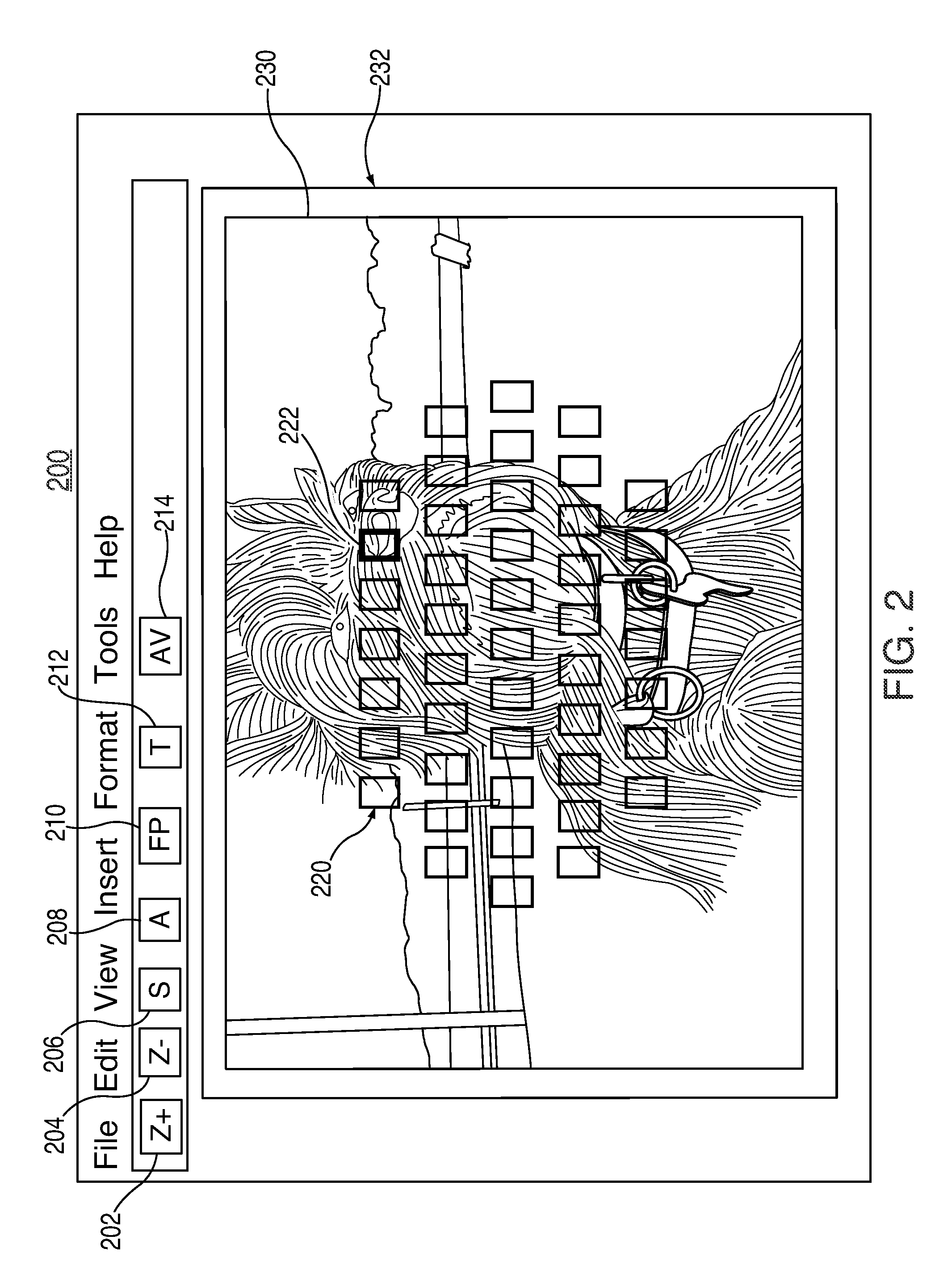Systems, methods, and computer-readable media for manipulating images using metadata
a technology of image metadata and system, applied in the field of systems, methods, computer-readable media for manipulating images using metadata, can solve problems such as not being able to solve, and achieve the effects of enhancing the viewing and editing process of users, quick and clear display of positions, and easy determination
- Summary
- Abstract
- Description
- Claims
- Application Information
AI Technical Summary
Benefits of technology
Problems solved by technology
Method used
Image
Examples
Embodiment Construction
[0023]Systems, methods, and computer-readable media for manipulating images using metadata are provided and described with reference to FIGS. 1-10.
[0024]An image processing system may be configured to allow a user to view images in either a “scaled-to-fit” mode or at a particular, fixed, zoom level (e.g., 1× or 2×). The user may also be provided with the ability to switch back and forth between these two modes using a keyboard “shortcut” (e.g., ‘z’ or ‘Ctrl-+’), a menu option, a mouse gesture, or any other suitable option. In the case of the keyboard shortcut, the image may simply be zoomed by a predetermined zoom level about the center of the image, even though the center may often not be the photographer's primary area of interest and / or the in-focus portion of the image. In the case of the mouse gesture, the image can be zoomed to the location of a mouse click on the image. While this approach may be somewhat of an improvement, it relies on the user trying to guess what the photo...
PUM
 Login to View More
Login to View More Abstract
Description
Claims
Application Information
 Login to View More
Login to View More - R&D
- Intellectual Property
- Life Sciences
- Materials
- Tech Scout
- Unparalleled Data Quality
- Higher Quality Content
- 60% Fewer Hallucinations
Browse by: Latest US Patents, China's latest patents, Technical Efficacy Thesaurus, Application Domain, Technology Topic, Popular Technical Reports.
© 2025 PatSnap. All rights reserved.Legal|Privacy policy|Modern Slavery Act Transparency Statement|Sitemap|About US| Contact US: help@patsnap.com



